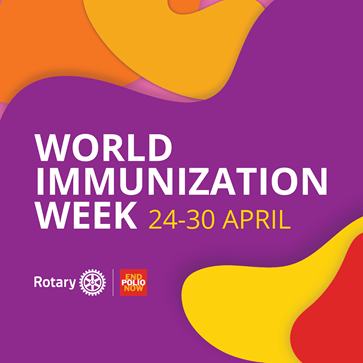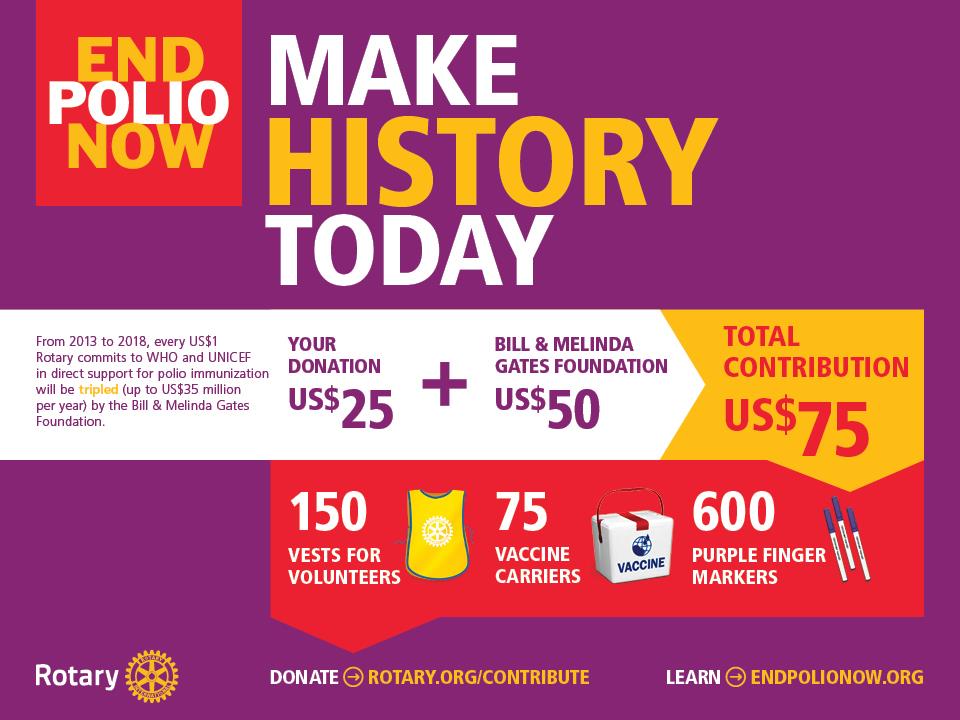PolioPlus
|
End Polio Now - Countdown to History |
|
In 1985, Rotary launched the PolioPlus program to protect children worldwide from the cruel and fatal consequences of polio. In 1988, the World Health Assembly challenged the world to eradicate polio. Since that time, Rotary's efforts and those of partner agencies, including the World Health Organization, the United Nations Children's Fund, the United States Centers for Disease Control and Prevention, and governments around the world, have achieved a 99% reduction in the number of polio cases worldwide. Rotarians stand at the brink of a great victory and look forward to celebrating the global eradication of polio. Advocate, Donate & Educate to END POLIO NOW & FOREVER! 21,000,000 Children Saved from the Paralysis of Polio Save the Date - World Immunization Week - April 24-30
 Happy Birthday Paul Harris! April 19 marks the 156th Anniversary of our Founder's Birth. Let's Celebrate with a Gift to The Rotary Foundation's
END POLIO NOW Fund Today!
Polio Update - April 15, 2024
One new Wild Polio case reported this week. We are now 4 weeks since the Onset of Paralysis of the most recent reported Wild Polio Case in the Nuristan, Afghanistan.
World Polio Day - One Day, One Focus, Ending Polio.Get ready for Rotary's annual World Polio Day event on October 24th. Will your club join the Miles to End Polio with a bike ride - stationery or on the road? How about a Swimathon? Maybe hold a community World's Greatest Meal? Purple Pinkie events are always a great way to engage your town in a quick and easy promotional event! If you're holding an event where members of your club are donating - give them each the credit they deserve! Download the 'Multiple Donor Form' to your left and let each complete their donation line. General public donations can be submitted via a check from your club on the same form. Make it easy to eradicate polio! Polio eradication is within our grasp. But if we don’t eradicate the disease now, the risk of crippling and deadly polio outbreaks will continue to threaten the world’s children - even in North America. For further information, please contact Polio Plus Chair, Bette Miller |
